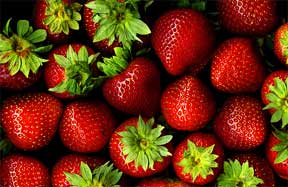The strawberry is high on almost everyone’s list of favorite foods. Unfortunately, a large number of insects and plant disease-causing organisms feel the same way about it!
This article is meant to inform, not to discourage strawberry growing. For anyone seriously interested in raising this delectable fruit, the necessary sweat and energy of establishing and maintaining healthy beds is well worthwhile. Yields of 10,000 quarts or more of marketable fruit per acre are not uncommon in many areas.
Strawberry diseases can be kept in check with a good cultural program, growing resistant varieties, and following a timely spray schedule.
Good management aids in control of all diseases.

Check with your state agricultural extension service or experiment station about strawberry growing in your area. Practically all states have good bulletins available free. Follow their recommendations. The practices named below are meant to supplement, not replace, your own state`s recommendations.
Strawberry Cultural Program
- Plant only certified, virus-free (and aphid-free), heat-treated plants of varieties adapted to your area. Before setting new plants remove and get rid of the old or spotted leaves. Just before planting, soak the plants for 15 minutes in a fungicide solution like (captan) (one tablespoonful of 50 per cent captan in a gallon of water). Plant at proper depth in well drained soil, 50 feet or more from large shade trees, 25 feet from fruit trees. Space plants for good. air circulation.
- Grow resistant varieties
- Destroy all wild or escaped strawberry plants up to 3000 feet from your beds where possible. Wild plants often serve as an important source of disease.
- Avoid spring applications of fertilizers high in nitrogen.
- Keep beds free of weeds and grasses by mulching with sawdust or straw. Many commercial pretreat the soil with a soil fumigant
- Follow a spray program. Spraying preserves the foliage and cuts down fruit rot, increasing both the yield and quality of the harvest.
- Control insects. Such pests as leaf beetles, plant bugs, weevils, crown borers, aphids. mites, spittlebug, flea beetles, white grubs, japanese beetles, four-spotted fungus beetles, wireworrns, grasshoppers, and cutworms can cause as much or more damage than diseases. Your state extension service or agricultural experiment station will give you insect control recommendations for your area.
- Practice sanitation. Destroy infected plants or plant parts as soon as found.
- Mulch beds in the fall with clean straw, hay or pine needles to prevent winter injury.
- Replace a bed after it has produced for two years.
- If nematodes are abundant and reducing the vigor and yield of plants, particularly in Southern states, you may wish to fumigate the soil. Check with your state agricultural authorities regarding what, how and when to apply nemacides.
Resistant Varieties
At present, strawberry varieties have resistance only to a few diseases, not all of which may be important in your vicinity. Because there are different strains of the fungi which cause the diseases, a variety rated as resistant in one area may be susceptible in another.
Disease Control Spray Program
To be effective, sprays must be applied thoroughly and on time. Applications should be made just before wet periods when most foliage and fruit infections occur. Be sure to cover all above ground plant parts, especially the under sides of leaves, with captan. Spraying generally gives better disease control than dusting.
Early in the season one gallon of spray should cover about 1000 square feet (43 gallons per acre). Later on, three gallons (120 gallons per acre) are needed to cover thoroughly the same plants to the point of run-off. Most commonly recommended insecticides and miticides can be added to the captan fungicide for insect and mite control.
